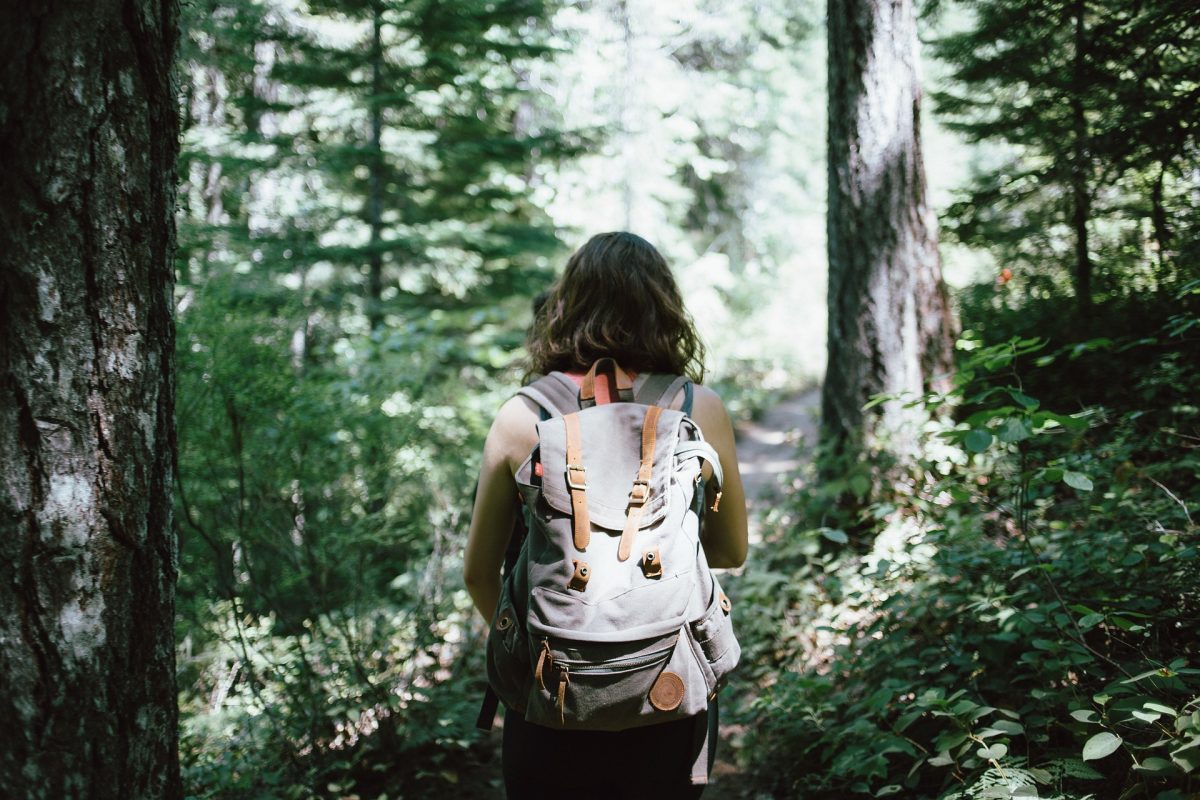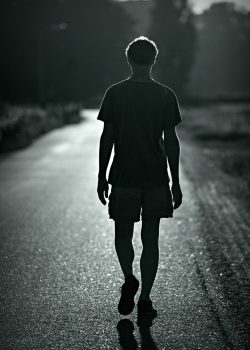
Walking is at the heart of our being and well-being, and it may very well be our saving grace in all manner of ways, through this pandemic and beyond, says UM's Edagr French. // Image: Pixabay.
The way of wellness – one step at a time
As July 24 is International Self-Care Day, Edgar French, UM’s spiritual care coordinator penned the following guest essay for UM Today.
It is an understatement to affirm how extremely disruptive the pandemic has been on people’s lives, how it has impacted every facet of living – physical, social, mental, emotional, and spiritual. Daily and seasonal practices, rhythms that typically endowed our days with a sense of purpose, connection, and overall wellness have been upended. I have noted, however, that over these 16 months of limitations and setbacks people have carried on as best as they can. There is a wisdom I have seen reflected in many neigbourhoods around the city, particularly over the noon and evening hours. As options for wellness have lessened, it would appear many have returned to the basics and essentials. I am referring to the practice of walking, an unassuming human activity that has shaped our species to the very core. As writer and journalist Wayne Curtis has posited in his book, The Last Great Walk: The True Story of a 1909 Walk from New York to San Francisco, and Why it Matters Today, “We got where we are today, both literally and figuratively, because of walking.”[1]
Not a day has gone by, since that fateful one on March of 2020, where my yearning to walk has dissipated. It has only increased. Lunch hour and after-supper walks, on my own or with my family, have become standard self-care custom. Curiosity piqued; I felt the need to do a little reading on the practice of walking. What’s behind my drive, or should I say, stride? Extensive research and studies have shown the broad range of benefits walking bestows on our cognitive, emotional, and physical states of being. Ferris Jabr’s article in the New Yorker, Why Walking Helps Us Think, points out how walking stimulates creative and innovative thinking. Writers, for instance, have instinctively and experientially known this to be true. A journal entry penned by the celebrated American essayist, poet, and philosopher, Henry David Thoreau, reveals this truth: “Me thinks that the moment my legs begin to move, my thoughts begin to flow.”[3] Physically, you develop some of the same benefits that runners typically experience with less of the strain on the body: blood circulation and flow of oxygen increases, a feeling of well-being overtakes us thanks to the flow of endorphins, fatigue ebbs away. Personally, what has intrigued me most and got me thinking about the importance of walking is Curtis’s exploration of the relationship between walking and our uniquely human evolutionary path.
Walking as it turns out, and not brain size (anthropologists suggest larger brains in our human ancestors developed two to three million years after we ventured off on two feet), launched our species down a road of development. Walking enabled us to find new uses for our hands and arms, from gathering food, carrying new-born, to crafting tools. Walking, an economical form of mobility, allowed us to travel farther, burn less calories, and consequently populate the entire earth. Curtis concludes that “standing upright and moving forward one step at a time is more than simple locomotion. Walking makes us human.”[4]
 And yet it is not simply how walking has propelled us to where we are now, there is something so deeply profound about the practice of walking and its relation to being human. It is engrained in our psyches, reflected in our frameworks of meaning and language, and typified in our responses to all forms of adversity. Empathy, for instance, is visualized as the practice of “walking in someone else’s shoes.” Most of the world’s great religions relate walking as a way of being and living a good and virtuous life. Consider Buddhism’s tenants for good living in the Noble Eightfold Path, or Hinduism’s four paths of Yoga practice. Judaism’s central experience, the Exodus, was a literal walk out of slavery, followed by the character-refining process of walking in the wilderness. Early practitioners of Christianity were known as People of the Way. Islam’s first surah in the Qur’an, prayed and recited by devout Muslims, asks Allah to “Guide us in the straight path, the path of those whom Thou has blessed.” Many faiths incorporate pilgrimages as spiritual disciplines. Social initiatives, like the BLM movement and Reconciliation, are described as journeys. Movements that are forces for positive social change, are typically sparked or enhanced by marches. To walk is to live, learn, become our best possible selves, thrive, and overcome setbacks.
And yet it is not simply how walking has propelled us to where we are now, there is something so deeply profound about the practice of walking and its relation to being human. It is engrained in our psyches, reflected in our frameworks of meaning and language, and typified in our responses to all forms of adversity. Empathy, for instance, is visualized as the practice of “walking in someone else’s shoes.” Most of the world’s great religions relate walking as a way of being and living a good and virtuous life. Consider Buddhism’s tenants for good living in the Noble Eightfold Path, or Hinduism’s four paths of Yoga practice. Judaism’s central experience, the Exodus, was a literal walk out of slavery, followed by the character-refining process of walking in the wilderness. Early practitioners of Christianity were known as People of the Way. Islam’s first surah in the Qur’an, prayed and recited by devout Muslims, asks Allah to “Guide us in the straight path, the path of those whom Thou has blessed.” Many faiths incorporate pilgrimages as spiritual disciplines. Social initiatives, like the BLM movement and Reconciliation, are described as journeys. Movements that are forces for positive social change, are typically sparked or enhanced by marches. To walk is to live, learn, become our best possible selves, thrive, and overcome setbacks.
Walking is at the heart of our being and well-being, and perhaps it is its simplicity and accessibility[5] that has attracted me to it as a wellness practice in a time of great complexity. It may very well be our saving grace in all manner of ways, through this pandemic and beyond. Edward Weston, the seventy-one-year-old whose epic walk from New York to San Francisco set a record in 1909, put it this way, “Anyone can walk. It’s free, like the sun by day and the stars by night. All we have to do is get on our legs, and the roads will take us everywhere.”[6]
[1] Wayne Curtis, The Last Great Walk: The True Story of a 1909 Walk from New York to San Francisco, and Why it Matters Today (New York: Rodale, 2014), 43.
[2] Ibid
[4] I am well aware this not the case for all and want to acknowledge the limitations imposed by individual’s differing physiologies, and the walkability of neighbourhoods in urbanized settings
[5] Ibid, 223.






